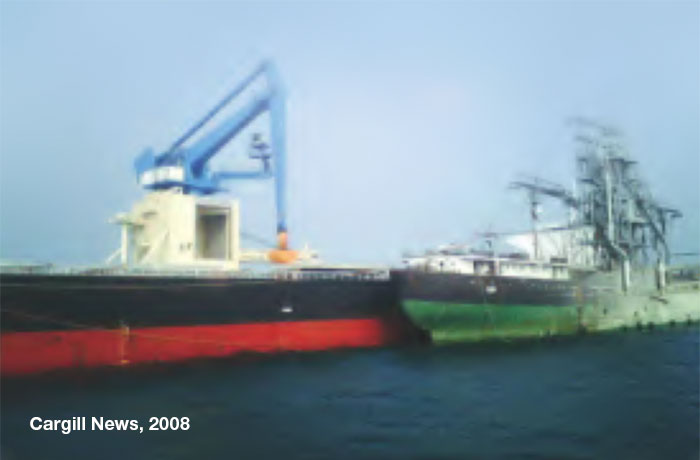The World’s First Offshore Port
To bring low-cost fertilizer to farmers across India, Cargill bypasses expensive ports with a floating platform that unloads large vessels offshore.
January 01, 2015
In India’s largest district, Kutch, periods of both intense rain and long droughts make for an unstable agricultural market. To support Kutch’s smallholder farmers through arid seasons, Cargill began importing large volumes of fertilizer from Tampa, Florida, to the region in the late 1990s.
By 1998, the company had identified a port in Rozy, Jamnagar, as the ideal offloading location for its growing fertilizer business. But the port was not deep enough to hold Panamax ships, large ocean vessels specifically designed to fit the exceptionally wide and deep Panama Canal.
While other deep-water ports did exist in India, extensive backlogs and outdated infrastructure made it both difficult and expensive to import large volumes.
With its sights set on Rozy, Cargill opted to create a custom solution for the challenge. The company developed an inventive port structure, designed to float just offshore in deeper waters that could accommodate big ships. Named the Rozy Pioneer, Cargill’s massive platform debuted in India that same year, 1998, featuring integrated cranes that unload more than 55,000 metric tons of dry bulk commodities while simultaneously loading other cargo for exporting. Floating five miles off the coast, goods are quickly unloaded from ships onto smaller barges, then ferried to shore for ground distribution.
The Rozy Pioneer introduced an effective way to bring high-quality fertilizer to farmers across India. Able to float virtually anywhere, it can discharge and load a total of 800,000 metric tons of dry bulk commodities each year. Compared with dredging, the technique for creating traditional shore ports in which waters are deepened with a machine, the floating port proved to be a lower-cost alternative. It is also extremely efficient, requiring 70% less energy than offloading equipment that is used onshore.
Following its success, the barge inspired new versions in ports across the globe. In 2008, Cargill installed a second floating port in Chioggia, just south of Venice, Italy, to bring commodities to farmers in the country’s rural regions.
 [image caption] The success of the Rozy Pioneer inspires a second floating port off the coast of Italy, improving the import process for its rural farming regions.
[image caption] The success of the Rozy Pioneer inspires a second floating port off the coast of Italy, improving the import process for its rural farming regions.
